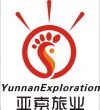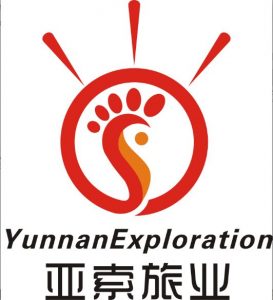
Reba Dance of Tibetan Ethnic Minority
Origin
According to the textual research of experts and scholars, Reba Dance(热巴舞) originated in Tibet in the 11th century AD, that is, the Northern Song Dynasty(北宋时期). Around the middle and late eleventh century, Tibetan Buddhism Gaju School (噶举派)was introduced to Diqing County(迪庆), and the Reba dance became popular.
The Reba Dance was initiated by Milarepa(米拉日巴), the second generation ancestor of the Gaju School. At first, it was only danced in temples for sacrifice and propaganda of the law. Later, it spread to the people and formed various schools and styles of the Reba Dance, such as the present Reba Festival(祭祀热巴), Wandering Reba(流浪热巴), Business Reba(商务热巴), Lisu Leiba Dance(傈僳族肋巴舞), Naxi Leba Dance(纳西勒巴舞) and so on. It has become many ethnic people’s favorite dance .
Legend
During the period of Chisong Dezan(赤松德赞), King of Tibet, Baimajiongnai(白马迥乃), Master Lotus and Peanut, whom Chisong Dezan invited from Tianzhu State(天竺) discussed the construction of Sangye Temple(桑耶寺).
After the construction began, the workers worked from morning to night, but when they arrived at the construction site the next day, as if they had not moved, all the stones and earth had returned to their original positions for several consecutive days. According Jiang Ge Abu’s (江格阿布)divination, Chisong Dezan invited Master Milarepa to the site. He taught people dancing Reba and for nine days and nine nights. The devastating monsters were attracted by the Reba dance. When they come back to their senses, the Sangye Temple had been built.
From then on, Milarepa walked around the world with his great disciple Riqiongduo Jiezaba(日琼多杰扎巴) and came to Snow Peak at the foot of Kawagbo Snow Mountain(卡瓦博格雪山) to teach the dance to the Sinong Peasants(斯农人). From then on, there was Sinong Reba Dance.
Distribution area
After the Reba Dance spread to Dehong Prefecture(德宏州), it was not only inherited by Tibetans, but also learned and inherited by Lisu(傈僳族) and Naxi (纳西族) ethnic nationalities.
In the process of their inheritance in various areas of Diqing County, they also integrated their own national and regional cultures, forming the Reba Dance of Diqing County, which spread to all parts of Diqing. At present, Diqing Reba Dance is still retained and spread in Diqing. Hobo Reba includes Sinong Tibetan Reba Dance(斯农热巴舞) in Deqin, Zimuxiong Reba Dance (子母熊热巴) and Lisu Leiba Dance(傈僳族肋巴舞) in Shangri-la. Sacrificial Reba mainly includes Tacheng Tibetan Shenchuan Reba (塔城藏族神川热巴)in Weixi County(维西县), Badi & Mugaoli Lisu Leiiba Dance(巴迪, 木高傈僳族肋巴舞) in Shangjiang Township(上江乡) and Xiasuoyi, Shangsuoyi Naxi Leba Dance(下所邑,上所邑纳西族勒巴舞) in Jinjiang Township(金江乡) , etc.
Chinese Version: http://www.dqich.cn/baohuminglu/detail/16/64 Translated by Olive Zhang/张银芳

 7 Days GolfingTour
7 Days GolfingTour
 8 Days Group Tour
8 Days Group Tour
 8 Days Yunnan Tour
8 Days Yunnan Tour
 7 Days Shangri La Hiking
7 Days Shangri La Hiking
 11 Days Yunnan Tour
11 Days Yunnan Tour
 6 Days Yuanyang Terraces
6 Days Yuanyang Terraces
 11 Days Yunnan Tour
11 Days Yunnan Tour
 8 Days South Yunnan
8 Days South Yunnan
 7 Days Tea Tour
7 Days Tea Tour
 8 Days Muslim Tour
8 Days Muslim Tour
 12 Days Self-Driving
12 Days Self-Driving
 4 Days Haba Climbing
4 Days Haba Climbing
 Tiger Leaping Gorge
Tiger Leaping Gorge
 Stone Forest
Stone Forest
 Yunnan-Tibet
Yunnan-Tibet
 Hani Rice Terraces
Hani Rice Terraces
 Kunming
Kunming
 Lijiang
Lijiang
 Shangri-la
Shangri-la
 Dali
Dali
 XishuangBanna
XishuangBanna
 Honghe
Honghe
 Kunming
Kunming
 Lijiang
Lijiang
 Shangri-la
Shangri-la
 Yuanyang Rice Terraces
Yuanyang Rice Terraces
 Nujiang
Nujiang
 XishuangBanna
XishuangBanna
 Spring City Golf
Spring City Golf
 Snow Mountain Golf
Snow Mountain Golf
 Stone Mountain Golf
Stone Mountain Golf













